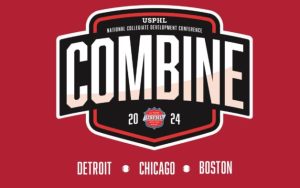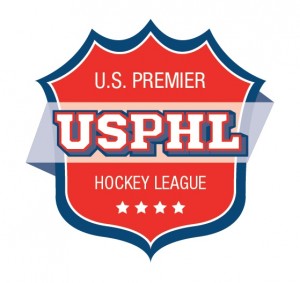Ice Den conditioning program a benefit to Jr. Coyotes

Clearly, hockey players are physical specimens.
To play the game at an elite level, players need to be in tip-top shape. For the Jr. Coyotes organization’s AA and AAA Elite teams, utilizing the new conditioning program at the Ice Den locations in Chandler and Scottsdale will see the program continue to compete at the highest level both in the state and throughout the country.
Ice Den vice president of programming and skating Julie Patterson said a demand for access to off-site training by skaters and players striving to be better, more well-rounded athletes prompted the creation last fall of the new conditioning program.
“Since it was built in 2011, we have informally used the multi-purpose area located in the RJM Rink to provide dryland training for travel hockey players and advanced figure skaters,” explained Patterson. “At the same time, we were seeing an increase in the interest and demands for the room, so we met with Don Jupp, who agreed that there was opportunity for a formal program to be developed.”
Jupp, the director of sports performance at the Center for Athletic Performance and Physical Therapy, partners with the Den and with his team, runs the training sessions. He said a great deal of planning goes into designing the training agendas.
“We as a company are very excited to be a part of the program,” Jupp said. “My role is to design and implement age-appropriate training programs for all Jr. Coyotes players based on a long-term athlete development plan. Establishing goals for the program with the coaches was the first priority. Once we had established expectations, we started to hammer out details on how to deliver an effective training plan. We offer training plans for teams, small groups, as well as for individual players.”
In addition to the Jr. Coyotes, the Arizona Coyotes, under the direction of athletic trainer J.P. Major, have found the space extremely useful. The NHL team continues to use Ice Den Scottsdale for practices and off-ice training. To have on-site access to a performance center of this quality ensures his players never miss a beat even when they’re not in their regular gym at the Glendale facility.
Patterson, who has been involved with the figure skating component of off-ice training for over 16 years, went on to say that off-ice training directly impacts on-ice performance.
“By working on agility, flexibility and cardiovascular endurance, it complements on-ice training and skills,” said Patterson. “In addition, off-ice conditioning helps prevent injuries and expedites recovery from injury. Having on-site conditioning means our athletes don’t have to leave the building wasting valuable time driving to another location. Athletes who take this training seriously can expect improved power and endurance, increased confidence, enhanced balance and agility and a spirit of team camaraderie.”
The off-ice training for figure skaters focuses on jump technique, conditioning and flexibility. These classes are designed to further enhance their artistry/performance factors, in addition to general strength and athletic components. The hockey training is comprised of a dynamic warmup, mobility and injury prevention, age-appropriate strength training and core work and energy system development.
Initially from St. Louis, Jupp moved to the desert four years ago and started working with the Jr. Coyotes. His company is involved with athletes of ages, abilities and sports across the valley, primarily hockey, soccer, volleyball and baseball.
With the Jr. Coyotes, Jupp said his approach is simple and one that will see dividends pay off in a short period of time.
“We want to focus on simple and effective exercises with an emphasis on technique and form,” said Jupp, who has 12 years’ experience in the training industry, nearly all in hockey. “The idea being that each year they progress with an eye on the 16U/18U teams being able to step into a structured strength and conditioning program similar to the U.S. National Team Development Program.”
— Matt Mackinder








